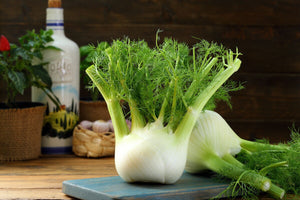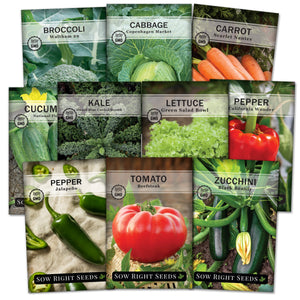How and When to Thin Seedlings for a More Productive Garden
Beginner gardeningAs a beginner gardener, when you first hear about “thinning,” you may think that’s the opposite of what you’re trying to do. Why would you want to pull out plants you have invested so much time and money into growing? However, thinning is a very simple gardening task that results in a more prolific and successful harvest.

What is Thinning?
Thinning is removing seedlings so that each plant is spaced far enough apart to grow to maturity. Unless the seeds are already planted at an optimal distance from one another, you’ll notice that some sprouts may be too close together.
At first, it’s exciting to see so many seeds sprouting. But if they are left to continue growing, they will eventually be competing with each other for space and nutrients. This will result in smaller plants that struggle to grow.
Common vegetables that will need thinning are radishes, carrots, beets, and leafy greens.
Why Should I Thin My Seedlings?
Thinning is done to avoid overcrowding. With the right amount of space, the plants have sufficient room to grow to a healthy size. Their roots will have space to grow, and the leaves will have room for air movement, resulting in less disease and fungus growth.
As you thin, you are also choosing the most viable seedlings. This allows you to focus on the strongest and healthiest plants.
When to Thin Seedlings
You will want to start thinning your seedlings soon after they first start sprouting. When the seedlings are a few inches tall and have their first true leaves, you may be able to tell which one is growing stronger.
It can be difficult to leave just one seedling when you have more, but if you thin it out early, you'll have a much stronger plant. Plan to thin seedlings before they have a mature root system.
How to Thin Seedlings Without Killing Them
Choose the most viable plant in each group and cut back the others.
Before they’ve grown a more mature root system, it is easy to pull out the sprouts that are too close. If the soil is moist, the seedling will come out without disturbing the roots next to them. However, if the seedlings are more developed, use sharp scissors and cut the sprout at the soil level so that you don’t disturb the roots of the plant you want to continue growing.
When thinning seedlings outside, it is better to do it late in the day or on an overcast day so that the remaining seedlings have less stress from heat and can recover if their roots are disturbed. After thinning, give the remaining plants a good watering.
Some seedlings can be dug up with a spoon and transplanted to another spot as long as the roots are not damaged. With root vegetables, you can also do a second thinning. After the vegetables have grown to a small “baby” size, you can harvest and eat them. The remaining vegetables can grow larger for a later harvest.
Swiss chard and other leafy plants can grow close for a while. Then cut off one of the plants at ground level and eat the baby greens and allow the plant next to it to continue growing.

How Much Space Do Seedlings Need?
So how much room does one seed need? And how do you know? Like cookies on a baking sheet, give them room to spread.
Knowing what you are planting will determine how much space you need to plan for.
The spacing information on the seed packet will give you a guideline. The measurements listed are close enough to maximize space and far enough to not interrupt growth or compete for nutrients.
For example, beets will say 2-4” because you can pick them in that size range. But a zinnia seed packet will say 18” because the full plant can take up that much room.
In general, the spacing for root vegetables depends on how large you want your vegetables to be. For example, carrots need about 1 inch of space, and beets about 3 inches.
Why not just space seeds further apart to begin with?
It is easy to space them optimally when planting bigger seeds like squash, melons, and beans. But smaller seeds like carrots are nearly impossible. Also, not all seeds germinate, and so many gardeners prefer to put in a few more seeds to get as many viable plants as possible. It might seem like a waste, but you can always eat the small sprouts or add them to your compost.
Thin out your seedlings when they are still young. Thinning out crowded seedlings is part of successful gardening. It’s a simple task that takes time, but with a careful hand, thinning will reap a bountiful harvest.
Written by Teresa Chandler







just wanted to ask . How tall do your Echinacea (MAGNUS SUPERIOR) get, i could not find it in your on line data. Thanks
Leave a comment